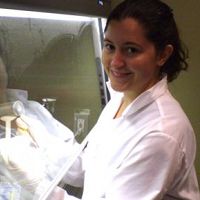Bergmann et al, 2011
The under-recognized dominance of Verrucomicrobia in soil bacterial communities.
Bergmann, G.T., Bates, S.T., Eilers, K.G., Lauber, C.L., Caporaso, J.G., Walters, W.A., Knight, R., Fierer, N. (2011)
Soil Biology & Biochemistry 43: 1450-1455.
-
Boulder, GRAD STUDENT
Abstract
Verrucomicrobia are ubiquitous in soil, but members of this bacterial phylum are thought to be present at low frequency in soil, with few studies focusing specifically on verrucomicrobial abundance, diversity, and distribution. Here we used barcoded pyrosequencing to analyze verrucomicrobial communities in surface soils collected across a range of biomes in Antarctica, Europe, and the Americas (112 samples), as well as soils collected from pits dug in a montane coniferous forest (69 samples). Data collected from surface horizons indicate that Verrucomicrobia average 23% of bacterial sequences, making them far more abundant than had been estimated. We show that this underestimation is likely due to primer bias, as many of the commonly used PCR primers appear to exclude verrucomicrobial 16S rRNA genes during amplification. Verrucomicrobia were detected in 180 out of 181 soils examined, with members of the class Spartobacteria dominating verrucomicrobial communities in nearly all biomes and soil depths. The relative abundance of Verrucomicrobia was highest in grasslands and in subsurface soil horizons, where they were often the dominant bacterial phylum. Although their ecology remains poorly understood, Verrucomicrobia appear to be dominant in many soil bacterial communities across the globe, making additional research on their ecology clearly necessary.
Citation
Bergmann, G.T., Bates, S.T., Eilers, K.G., Lauber, C.L., Caporaso, J.G., Walters, W.A., Knight, R., Fierer, N. (2011): The under-recognized dominance of Verrucomicrobia in soil bacterial communities. Soil Biology & Biochemistry 43: 1450-1455.. DOI: 10.1016/j.soilbio.2011.03.012
Explore Further

